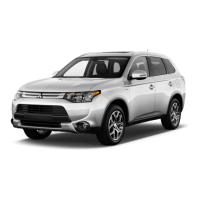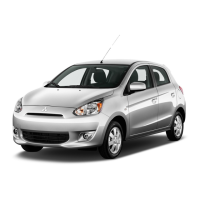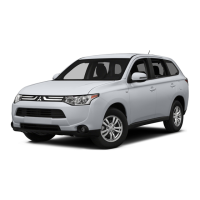Service brake
5-62 Features and controls
5
N00517500275
Overuse of the brake can cause weakening,
resulting in poor brake response and prema-
ture wear of the brake pads.
When driving down a long or steep hill, use
engine braking by downshifting.
N00517600436
Your vehicle is equipped with power brakes
for more braking force with less brake pedal
effort.
Your brakes are designed to operate at full
capacity, even if the power assist is not being
used.
If the power assist is not being used, the effort
needed to press the brake pedal is greater.
If you should lose the power assist for some
reason, the brakes will still work.
If the power brake unit or either of the two
brake hydraulic systems stops working prop-
erly, the rest of the brake system will still
work, but the vehicle will not slow down as
quickly.
You will know this has happened if you find
you need to press the brake down farther, or
harder when slowing down or stopping, or if
the brake warning light and the warning dis-
play in the multi-information display come
on. Have the brake system repaired at an
Towing
Do not tow 4-wheel drive vehicles with the
front or rear wheels on the ground (Type A
or Type B) as illustrated. This could result in
damage to the drivetrain, or unstable towing.
If you tow 4-wheel drive vehicles, use Type
C or Type D equipment.
Even in “2WD” mode, the vehicle cannot be
towed with the front or the rear wheels on
the ground.
Jacking up a 4-wheel drive
vehicle
Do not leave any objects near the brake
pedal or let a floor mat slide under it;
doing so could prevent the full pedal
stroke that would be necessary in an
emergency. Make sure that the pedal can
be operated freely at all times. Make sure
the floor mat is securely held in place.
It is important not to drive the vehicle with
your foot resting on the brake pedal when
braking is not required. This practice can
result in very high brake temperatures, pre-
mature lining wear, and possible damage to
the brakes.
Power brakes
BK0206700US.book 62 ページ 2014年3月25日 火曜日 午後4時42分

